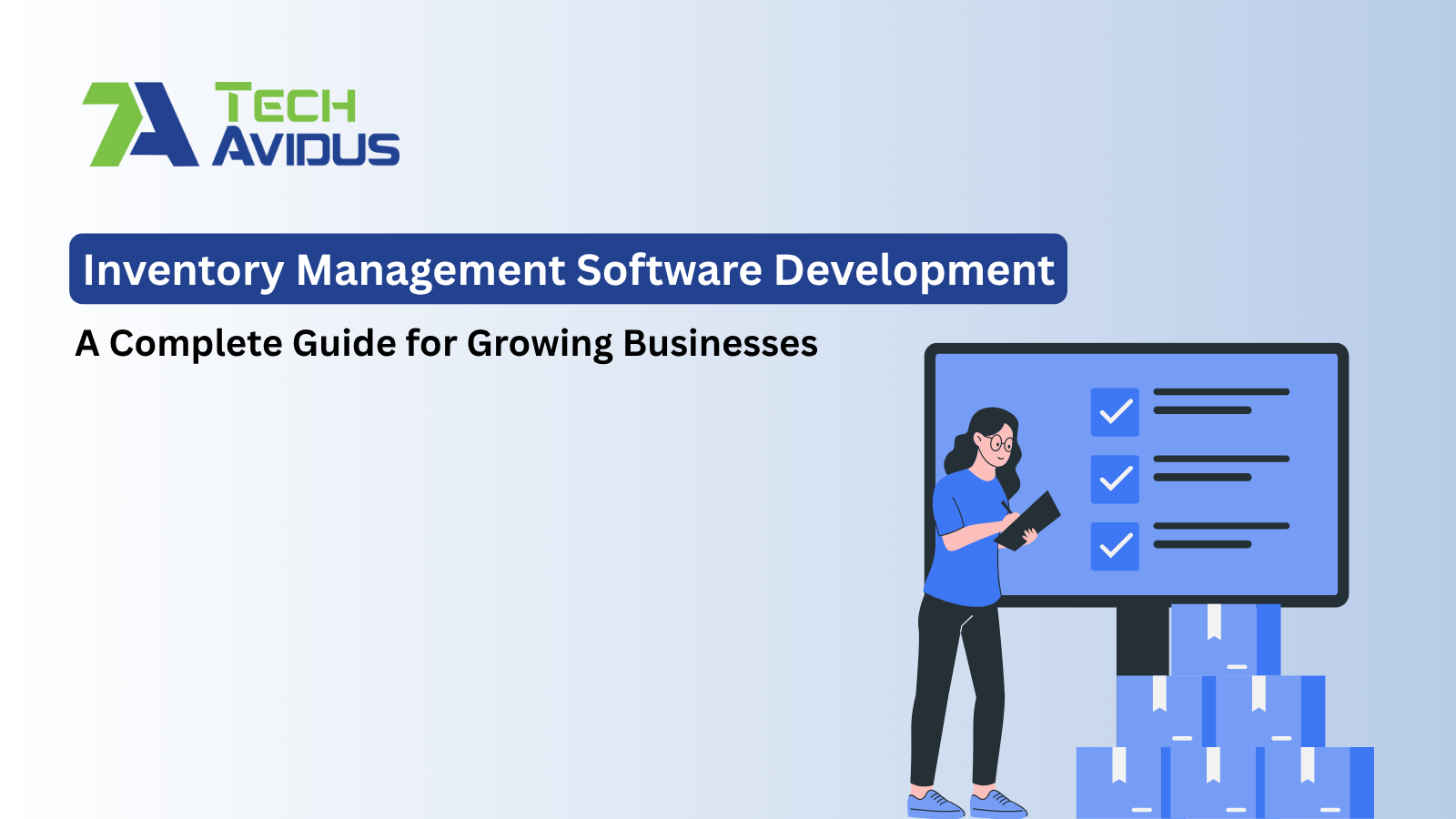
For growing businesses in the supply chain and logistics industry, managing inventory efficiently is critical. Inventory mistakes can lead to stockouts, overstocking, poor customer satisfaction, and loss in revenue. Whether you're a D2C brand, a manufacturer, or managing multiple warehouses, inventory management software development can transform the way you operate.
In this comprehensive guide, we’ll walk you through what inventory management software is, its features, benefits, and how to develop a tailored solution for your business.
Inventory management software is a digital solution that helps businesses track, manage, and control inventory levels, orders, sales, and deliveries in real-time across one or multiple locations.
It centralizes inventory data and integrates with your ERP, accounting, sales, and logistics systems, making inventory transparent, traceable, and predictable.
🔍 Example: A growing eCommerce store uses inventory software to automatically sync stock levels across its website, Amazon, and physical store—eliminating mismatches and stockouts.
Each feature plays a crucial role in streamlining inventory operations and ensuring supply chain efficiency.


✅ When to choose custom software: If your business has unique inventory needs, multiple warehouses, manufacturing integration, or wants to scale rapidly—custom development is the better choice.
The next generation of inventory software is AI-powered, cloud-native, mobile-first, and IoT-integrated.
Trends to Watch:
Identify whether you're facing mismatches, delays, high holding costs, or visibility issues.
Work with experienced developers to scope your needs and avoid feature overkill.
Build a mobile-friendly interface that’s intuitive for floor teams to use with minimal training.
Popular options: Flutter/React Native for mobile, Node.js/Java for backend, MySQL/PostgreSQL for databases.
Include barcode scanning, purchase orders, real-time tracking, analytics, ERP/API integrations.
Run the first version with a single location to gather real-world feedback.
Optimize performance, add new features, and roll out to multiple locations.
Custom inventory software helps D2C brands sync inventory across Shopify, warehouses, and Amazon while automating reorders.
Integrating production tracking and raw material inventory ensures JIT (Just-In-Time) manufacturing processes stay on track.
Affordable inventory and invoicing apps help small retail or wholesale businesses stay competitive with real-time tracking and GST-ready billing.
Key Questions to Ask:
🚀 Tip: Choose a firm that offers free consultations, so you can assess their understanding of your business before investing.
While costs vary depending on features, integrations, and complexity, most development partners offer free consultations to help estimate based on your specific business needs and goals.
Whether you’re running a fast-scaling D2C brand, a multi-warehouse business, or a manufacturing operation, investing in custom inventory management software development can offer a strong ROI, increase order accuracy, and reduce operational inefficiencies.
By choosing the right features and the right development partner, you can future-proof your inventory operations and thrive in today’s competitive supply chain landscape.
👉 Contact us for a free consultation to discuss how we can help you build the perfect system tailored to your inventory challenges.
Why is my inventory always out of sync?
Because systems like your POS, warehouse, and eCommerce aren’t talking to each other. Integrated software solves this.
How do I stop inventory mismatches between warehouse and online store?
By using centralized inventory software with real-time updates and barcode scanning.
How do I reduce stockouts and overstocking?
Enable demand forecasting, low-stock alerts, and automated reorder rules.
Why does my retail business have inventory losses?
Due to theft, miscounts, or returns mismanagement—track it with smart auditing features.
Is there inventory software for D2C brands?
Yes! Custom solutions integrate with Shopify, WooCommerce, Amazon, and warehouse systems seamlessly.
Can it track production too?
Yes, manufacturers can use software to track raw materials, production stages, and finished goods.
Can I track inventory in multiple locations?
Absolutely—multi-warehouse and multi-location inventory tracking is standard in advanced systems.
Can I get a barcode scanning system?
Yes—barcode scanning boosts warehouse speed and accuracy significantly.
Can it manage purchase orders?
Yes—automated PO generation and supplier tracking are core modules.
Is there inventory software with dashboards?
Yes—real-time dashboards help you track key KPIs like turnover, value, and stock status.
What if I need invoicing too?
Custom software can combine inventory + invoicing in one platform.
Can I automate inventory management?
Yes—with reorder automation, smart alerts, and integrations, it’s fully automatable.
Can it reduce holding costs?
Yes—by helping maintain optimal stock levels and optimizing reorder cycles.
Can it integrate with ERP?
Definitely—ERP integrations are critical for growing businesses.
Can inventory software improve order accuracy?
Yes—barcode scanning, order checklists, and automated picking help reduce errors.
How to find the right app developers?
Choose developers with domain expertise in supply chain, ERP integrations, and warehouse software.

Keshu Keshvala is the Chief Marketing Officer at TechAvidus — a trusted software development company based in India, specializing in AI-powered web, mobile, and custom software solutions. With 10+ years of experience in the IT and software development industry, Keshu has played a key role in delivering enterprise-grade digital solutions that help clients reduce costs, improve efficiency, and achieve optimal results tailored to their business needs.
We have the most experienced Top 1% of Tech Talent Teams who can deliver superior technology solutions.
All Rights Reserved. Copyright © 2025 | TechAvidus